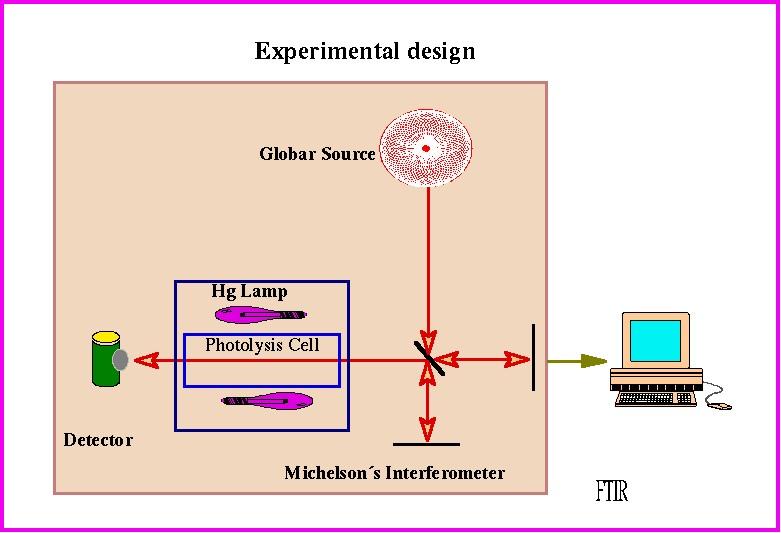
INFIQC, Dpto de Fisicoquímica. Facultad de Ciencias Químicas. Universidad Nacional de Córdoba. Ciudad Universitaria - CP 5000. Córdoba. Argentina.
E-mail: gaac@fisquim.fcq.unc.edu.ar.
Abstract
Due to the replacement of CFCs by the less harmful HFCs, a huge body of information about the chemistry of these fluorinated compounds has been published and is currently of paramount importance. The radicals produced by these molecules involve mainly the families known as "CF3Ox" and "FCOx". The FCO radical is thus involved in many degradation reactions.
CF3 and FCO radicals are obtained when CF3COF is photolyzed. Both radicals react to give C2F6, CO, CF2O and also regenerate the precursor molecule thus giving a quantum yield of CF3COF disappearance lower than unity (f =0.4).
CF3CF2C(O)F is a suitable source to generate the title radicals allowing to determine whether a longer chain can modify either the photolysis mechanism or the rate constant with respect to the CF3COF.
We performed the photolysis of CF3CF2C(O)F either pure or in the presence of c- C6H12 and (FCO)2 (oxalyl fluoride), following the concentration of the different species by FTIR spectroscopy.
In the photolysis of the pure precursor, the products formed were C4F10, CO and CF2O in accordance with the case of CF3C(O)F.
When enough ciclohexane is added, the radicals formed in the initial step (C2F5 and FCO) are trapped and the recombination reactions between them are suppressed. It is observed that the rate of reactant consumption is faster than without c-C6H12. This suggests that in the photolysis of pure CF3CF2COF, the reaction between C2F5 and FCO radicals plays a role. This was corroborated by the photolysis of CF3CF2C(O)F in the presence of (FCO)2 (i.e. in presence of excess of FCO radicals). Here again, we observed the variation in the rate of disappearance of CF3CF2C(O)F.
The rate constant of the reaction C2F5 + FCO ® CF3CF2COF was obtained through a simulation using both, our experimental data and bibliography data available. The value found is similar, within experimental error, to the rate constant obtained for CF3 and FCO radicals; therefore the length of the chain does not affect the mechanism.
Introduction
In the last teen years, it has been of great interest to know the impact of the substitutes of CFCs and their degradation products on atmospheric chemistry. In fact, the radicals CF3Ox and FCOx originated from the decomposition of HFCs are involved in many reactions in the higher atmosphere.
In previous works, the reaction between CF3 and FCO radicals,1,2 obtained when CF3COF is photolyzed was studied.. Both radicals react to give C2F6, CO, CF2O and also to regenerate the precursor molecule, thus giving a quantum yield of CF3COF disappearance lower than unity (f =0.4). Similarly, the quantum yield of CF3CF2COF photolysis gave the same value as that for the CF3COF,3 but there were no indication about the kinetics of the reaction.
Taking into account the above results, we performed the photolysis of CF3CF2COF alone and in the presence of either c-C6H12 or (FCO)2 in order to know the mechanism which is taking place and to determine the C2F5 and FCO radical recombination rate.
Experimental details
Commercially available samples of perfluoropropyl fluoride (CF3CF2C(O)F) (P.C.R. Research Chemicals) were trap-to-trap distilled in vacuum before use and their purity was checked by IR spectroscopy. Cyclohexane (98%) was used as received. Oxygen was condensed by flowing O2 at atmospheric pressure through a trap immersed in liquid air. It was then pumped under vacuum several times and transferred to a glass bulb whilst the trap was still immersed in liquid air. Oxalylfluoride (FCO)2 was synthetized by fluorination of oxalylchloride with NaF in sulfolane as solvent and purified by trap-to-trap distillation4.
Reactants and products were manipulated in a conventional high-vacuum system. The photolyses were carried out using low pressure Hg lamps surrounding a quartz cell fitted with KCl windows which was located in the optical path of a Fourier transform IR (FTIR) spectrometer which was used to follow the evolution of the reaction with time ( see Scheme 1).

Scheme 1
Results and discussion
The comparison between the photolysis rate of CF3CF2C(O)F alone and with either c-C6H12 or (FCO)2 was performed using the setup described above. When CF3CF2C(O)F alone was photolized, the products formed were C4F10, CO and CF2O (Fig. 1), in agreement with the results of Weibel et al.3 These products could be explained taking into account that the C-C bond breaking gives CF3CF2 and FCO radicals:
CF3CF2C(O)F ® CF3CF2+ FCO (1)
The CF3CF2C(O)F and CF2O quantification wereperformed using calibration curve for each pure substance.
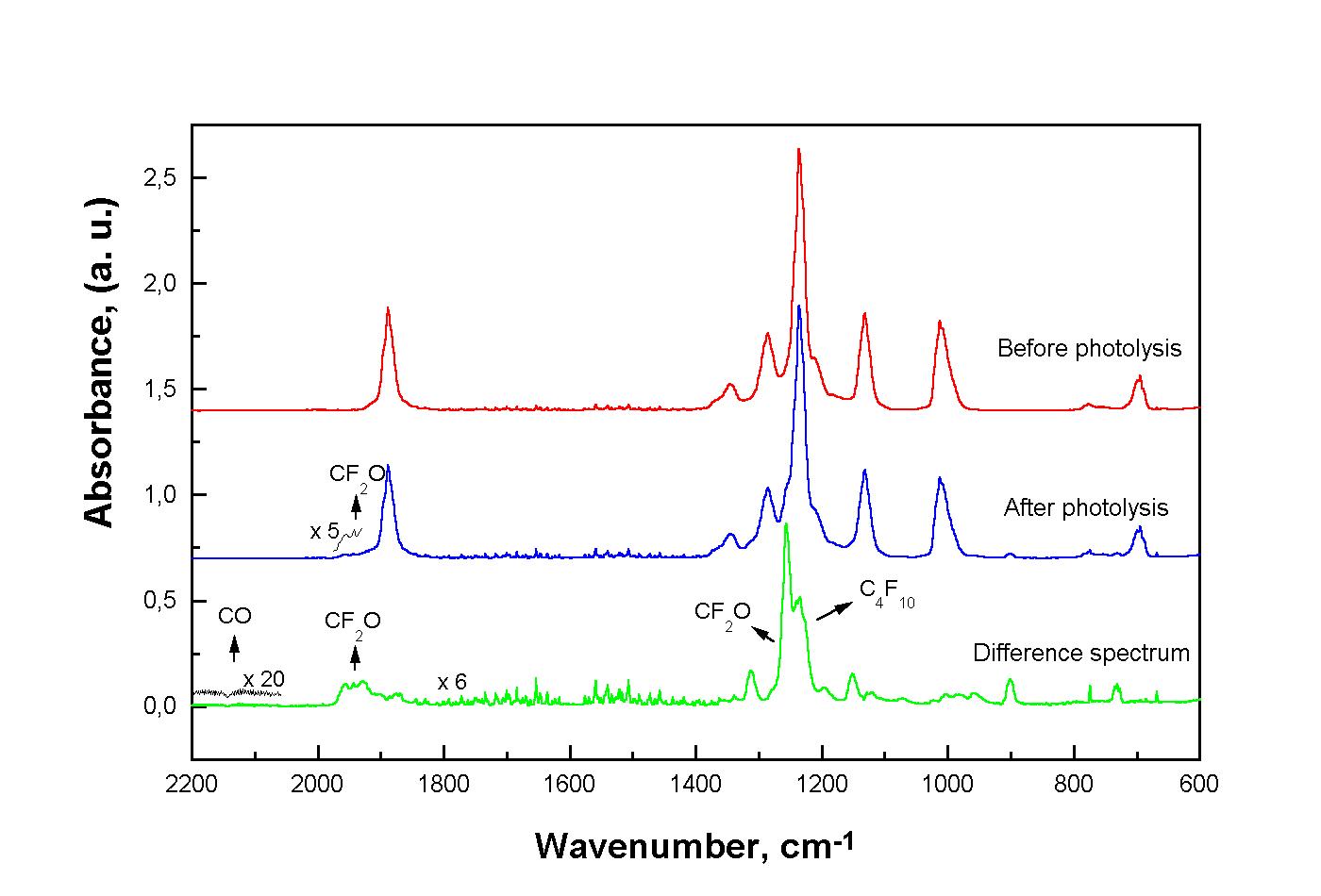
Fig. 1: IR spectra obtained for the photolysis of pure CF3CF2COF at 254 nm.
The experiments carried out in the presence of c-C6H12 gave CF3CF2H andHFCO as products. In these experimental runs it was not observed C4F10 or CF2O formation.This fact indicates that all the CF3CF2 and FCO radicals formed reacted with the c-C6H12 molecules:
CF3CF2 + c-C6H12 ® CF3CF2H + c-C6H11 (2)
FCO + c-C6H12 ® HFCO + c-C6H11 (3)
When comparing the CF3CF2C(O)F photolysis rate alone and in the presence of c-C6H12(Fig. 2), it can be seen that the CF3CF2C(O)F amount reacted is greater in the second case. This observation suggests the CF3CF2 and FCO radicals react among them in a recombination reaction when there is no other gas added:
CF3CF2 + FCO ® CF3CF2C(O)F (-1)
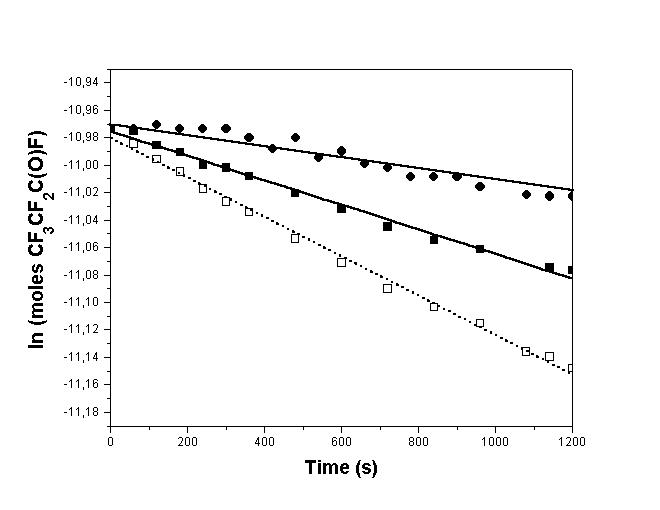
Fig. 2: Plot of ln(moles CF3CF2COF) vs. photolysis time. (", with (FCO)2 added; $, alone; %, with c-C6H12 added). The lines correspond to the least squares fitting to the experimental points
To corroborate this possibility we carried out a new CF3CF2C(O)F photolysis in the FCO radicals presence using a good FCO source such as oxalyl fluoride, (FCO)2. In this case, the C4F10 formed as well as the reactant consumed are smaller than when CF3CF2C(O)F is photolysed alone. In Fig. 2 it can be seen the photolysis rate and in Fig. 3 are shown the spectra obtained in this new condition.
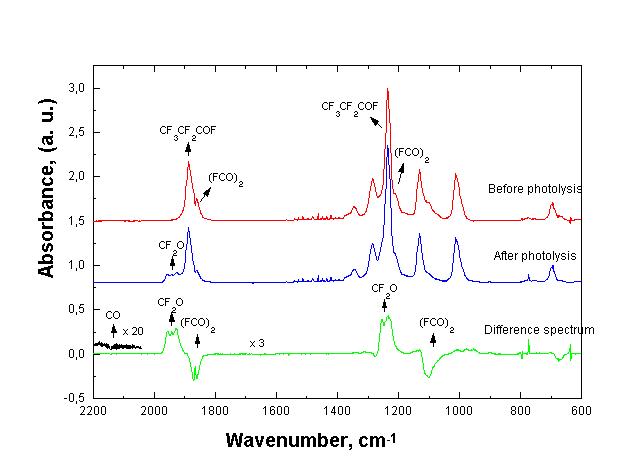
Fig. 3: IR spectra obtained for the photolysis of CF3CF2COF in the presence of (FCO)2 at 254 nm.
In accordance with the results presented previously it is clear that the presence of an effective radical scavenger, able to trap radicals that participate in reactions (2) and (3), allows the reaction photolysis rate determination (1).
Two photolytic experiments were performed with initial CF3CF2C(O)F concentration of 4 x 1016 molecule cm-3 in absence and in presence of c-C6H12 (90 torr). Photolysis time was 1200 s, to maintain low conversions. A comparison of the CF3CF2C(O)F concentration variation between the two runs is presented in Fig. 2. Note that the CF3CF2C(O)F disappearance is faster in the last case. From its slope (dotted line in Fig. 2), we obtain the CF3CF2C(O)F photolysis rate value of (1.4 ± 0.1)x 10-4 s-1.
The mechanism proposed after the C-C bond rupture, when the photolysis is carried out in c-C6H12 absence, is:
CF3CF2 + FCO ® CF3CF2C(O)F (-1)
CF3CF2 + CF3CF2 ® C4F10 (3)
FCO + FCO ® CF2O +CO (4)
The k3 and k4 rate constants were obtained from literature. In the case of k4, there are four values reported but only the work of Behr et al.5 was carried out at pressures comparable to those used in our experiments, (although independent) so we took the value (1.7 ± 0.3) x 10-11 cm3 molecule-1 s-1. For k3the value informed is 2.85 x 10-12 cm3 molecule-1 s-1.6
With the mechanism just proposed, we simulated the time variation of the CF3CF2C(O)F and CF2Oconcentration. The experimental and simulation results are shown in Fig. 4. The best fiitting of the k-1 value gives (6.8 ± 0.8)x 10-12 cm3 molecule-1 s-1. This value of the recombination rate constant also explains why, in the CF3CF2C(O)F photolysis in presence of oxalylfluoride, the C4F10 concentration drops so efficiently and the CF3CF2C(O)F concentration decreases much less than when it is photolysed alone.
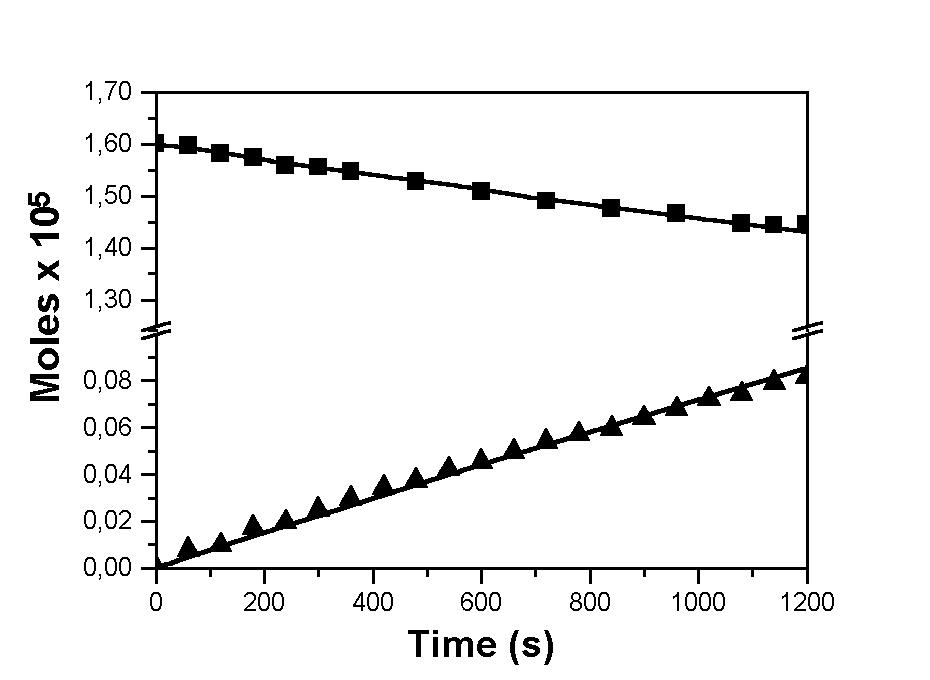
Fig. 4: Fitting to the actual concentration of species ($, CF3CF2COF; Å, CF2O) when the value assumed by k-1 in the simulation is 6.8 ± 0.8)x 10-12 cm3 molecule-1 s-1.
In the study of the CF3CF2C(O)F photolysisin the presence of c-C6H12, an increase in the photolysis rate of the reactant is observed. In our experimental conditions k1 was (1.4 ± 0.1)x 10-4 s-1.
When (FCO)2 is added, an excess of FCO produces a reduction of the CF3CF2C(O)F photolysis rate. The two former conclusions are compatible with a mechanism mediated by radicals.
The low quatum yield for the CF3CF2C(O)F disappearance and the results previously presented suggest that CF3CF2 and FCOradical recombination reaction is taking place and the calculated rate constant obtained for this recombination was (6.8 ± 0.8)x 10-12 cm3 molecule-1 s-1.
The value found is similar, within experimental error, to the rate constant obtained for CF3 and FCO radicals. This indicates that the length of the chain of the perfluoroalkyl radical does not affect the rate constant nor the mechanism.
Acknowledgments
We are indebted to CONICOR, CONICET and SECyT-UNC for financial support.
References
1-D.E. Weibel, C.M. Vöhringer, E.R. Staricco, E.H. Staricco, J. Photochem. Photobiol. A: Chem. 63 (1992) 1.
2-K.L. Bierbrauer, M.S. Chiappero, F.E. Malanca, G.A. Argüello, J. Photochem. Photobiol. A: Chem. 122 (1999) 73.
3-S.A. Cariati, D.E. Weibel, E.H. Staricco, J. Photochem. Photobiol. A: Chem. 123 (1999) 1.
4-C.W. Tullock, D.O. Coffman, J. Org. Chem. 25 (1960) 2016.
5-P. Behr, H. Heydtmann, Phys. Chem. Chem. Phys. 100 (1996) 553.
6-G.A. Skorobogatov, V.G. Seleznev, O.N. Slezar, Dokl. Acad. Nauk. SSSR 231 (1976) 1407.
Back to
| Session 1 : Stratospheric Processes and their Role in Climate | Session 2 : Stratospheric Indicators of Climate Change |
| Session 3 : Modelling and Diagnosis of Stratospheric Effects on Climate | Session 4 : UV Observations and Modelling |
| AuthorData | |
| Home Page | |